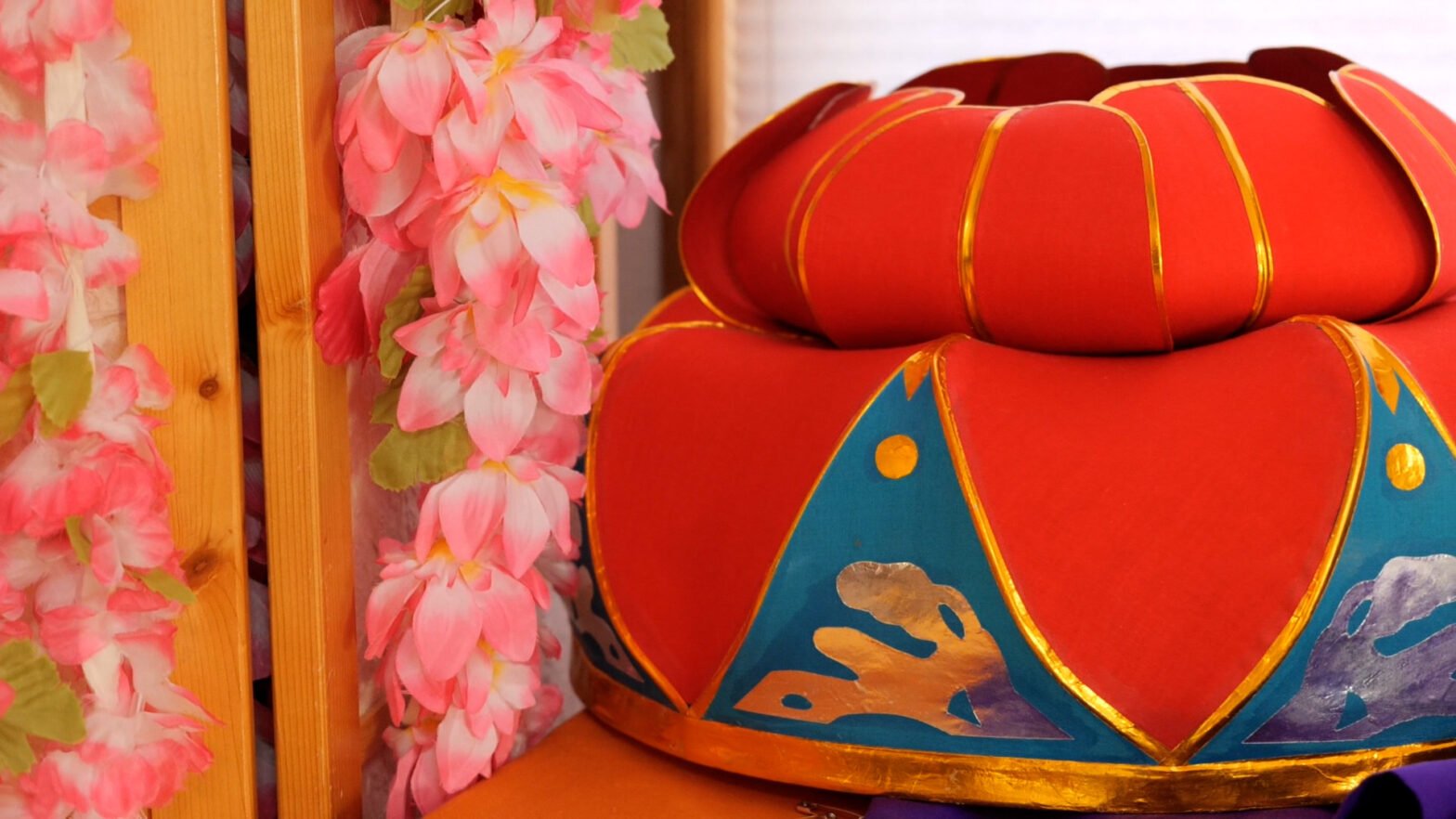By Junko Featherston
As notes from a three-stringed sanshin echoed through the room, Sanae helped wrap me in layers of white and red cloth, then pulled over my shoulders the bright yellow top layer, hand-painted with a floral pattern. The garment’s wide sleeves swished around my arms as I lowered my head for the hanagasa, a decorative hat shaped like a red flower with petals of blue signifying sky and slashes of silver representing waves on the glistening ocean.
I picked up two sets of yotsutake and clacked the bamboo castanets together to the rhythm of the sanshin.
I was a half-Okinawan woman learning a traditional Okinawan dance for the first time in my life. This is exactly why Sanae Wright built her dance studio.
Okinawa is a Japanese island in the Philippine Sea, as far away from Tokyo as it is from Manila. It is best known as the site of a major battle near the end of World War II, but few Americans know that Okinawa had been part of the independent Ryukyu Kingdom, with its own ethnicity, language, culture and traditions before it was annexed by Japan in 1879.
Wright built the studio so that she and other members of the Okinawan kenjinkai cultural group could practice traditional dances, which they perform every year at the Japanese fall festival, aki matsuri, in late September.
The festival offers Okinawans like Wright a rare opportunity to share their culture in Albuquerque.
“I am so lucky to be able to dance in present time and to be able to pass it on to the next generation,” Wright says.
And passing it on is more important than ever. With few Okinawan people living in New Mexico and only a few members left in the group, soon the traditions may disappear here.
Reed Ridens is a 22-year-old born here in Albuquerque but his family is from Ishigaki, Okinawa.
Some younger generation of mainly mixed-race Okinawans who live in New Mexico do feel a sense of connection to the island, regardless of living in the desert.
“Identifying as Okinawan is important,” Ridens said. “I grew up identifying as Japanese because I thought that Okinawan people are Japanese. I didn’t even realize that we’re not. We’re an indigenous group that was conquered.”
After Japan annexed the islands, the government began a campaign of assimilating Okinawans into Japanese life, through schools that taught exclusively Japanese language and culture. The islands new rulers sought to unify the nation by erasing Ryukyuan identity and instilling in them an allegiance to the Japanese emperor.
Then, during World War II, more than 140,000 Okinawan civilians died during the 82-day Battle of Okinawa in 1945, which also claimed more than 100,000 Japanese troops and 12,000 American fighters.
Despite the tragedy, the people remain resilient and determined to preserve their culture, even resurrecting the art of hajichi, a distinct form of tattooing done by Okinawan women, for Okinawan women.
Ridens doesn’t have a hajichi-style tattoo, but he does have the word なんくるないさ, or nankurunaisa, which is an Okinawan idiom meaning “everything is going to be alright.”
Like my first traditional dance moves, these are small steps that take us a long way toward connecting with our ancestors.
Junko Featherston is a half Okinawan American senior at the University of New Mexico. She is a reporter for New Mexico News Port and an intern at New Mexico PBS. Follow her on Twitter: @UNMJunko.
